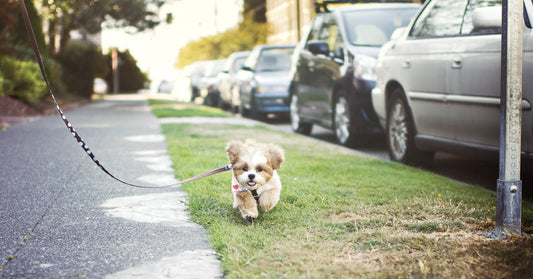The job of a guide dog is a very important one. Guide dogs are true service animals who help visually impaired people navigate independently through their daily lives. Have you ever wondered how this partnership works and where these well-trained dogs come from? We are here to give you the complete low down on the life and training of guide dogs.
There are many notable schools that dogs can graduate from to be considered a guide dog. The oldest and most recognizable one in the country is The Seeing Eye. Their New Jersey-based program breeds, raises, and trains dogs for their important work of serving the blind.
Puppyhood
The Seeing Eye’s puppies are German Shepherds, Labrador Retrievers, Golden Retrievers, and Golden Labs, bred for good health and disposition. They are raised in an enriching environment that acclimates them to human attention and all the sights, surfaces, and sounds they may encounter. They get trained around everything from mannequins to vacuums. When they are old enough, the puppies move in with volunteers who continue exposing them to real-world experiences, from car-rides and airports.
During their first year, puppies are taught basic commands including leash-training and good manners. When they reach sufficient maturity, it’s time to say goodbye to their puppy-raisers, and off to the next phase of dog school at The Seeing Eye.
Off to Dog School
At The Seeing Eye puppies receive a physical evaluation and are assigned to a sighted instructor who teaches them to navigate in various real-world environments and obstacle courses. Dogs are taught intelligent disobedience meaning they will ignore commands like “cross the street” when it is unsafe. They learn to guide their instructor around obstacles – at ground level and at human eye-level, and they indicate features such as curbs and steps. After four months, it’s time for some tests.
The instructor wears a blindfold and takes the dog on an advanced course to check their skills, and the dog is tested in the complex environment of New York City to make sure they have the focus and disposition required for the job. If they pass, and about 75% do, it’s time for the final phase – matching them to their new owner. Dogs that don’t make the cut can find work with law enforcement, or may be adopted by their puppy-raiser.
Dog School for Humans
The new Seeing Eye Dog owners, ranging from teenagers to seniors, stay at dog school for a few weeks to bond and train with their new guide dog. Dogs are matched to the owner based on their walking speed, energy level, and personality. Once paired, the human and dog learn to navigate together with the commands the dog knows, like “left”, “right”, and “forward”. Before long, they are a bonded team ready to go out into the world!
The Dog Life
A guide dog will serve their owner for the next eight or nine years, assisting them in daily routines like taking the bus or train to work and going to store. Like all dogs, guide dogs enjoy some playtime, but their primary satisfaction comes from being focused on the job. In their later years, the guide dog will enjoy retirement to the role of pet, and the owner can return to The Seeing Eye or other guide dog schools to be matched with a new guide dog.
It takes a team effort to care for and train guide dogs from puppy to professional, but the benefits of independence and dignity they bring to visually impaired individuals are well worth it. If you’d like to get involved, see if there are guide dog schools near you that need volunteers or donations. It’s a great way to get some puppy-time, as well as the satisfaction of helping others.





